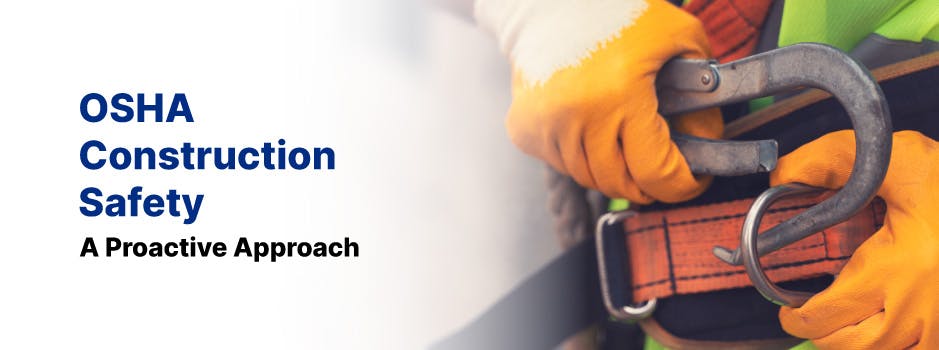OSHA Construction Safety: A Proactive Approach
Introduction
Occupational Safety and Health Administration (OSHA) is a federal agency in the United States, responsible for ensuring safe working conditions by enforcing standards and regulations. With construction being one of the most hazardous industries, OSHA construction safety is a critical aspect of maintaining safe worksites. This article explores the proactive approach to OSHA construction safety, including the importance of training, hazard identification, risk assessment, and implementation of preventive measures.
I. The Importance of OSHA Construction Safety Training
Training for Employees and Employers
- OSHA 10-Hour and 30-Hour Training: Comprehensive courses designed to educate construction workers and supervisors about OSHA standards, hazard recognition, and preventive measures.
- Specialty Training: Courses focusing on specific construction safety topics, such as fall protection, electrical safety, and scaffolding.
- Employer Responsibilities: Emphasizing the importance of providing appropriate training and resources to employees to ensure a safe working environment.
Benefits of OSHA Training
- Reduced Workplace Injuries and Fatalities: Proper training equips workers with the knowledge and skills to recognize and avoid hazards, leading to safer worksites.
- Improved Compliance: A well-trained workforce is better equipped to comply with OSHA regulations, resulting in fewer violations and penalties.
- Enhanced Productivity: A safer working environment leads to reduced downtime and increased worker morale, positively impacting overall productivity.
II. Hazard Identification and Risk Assessment
Hazard Identification
- Job Hazard Analysis (JHA): A systematic process that involves identifying potential hazards associated with specific tasks and determining the necessary control measures.
- Site Inspections: Regularly inspecting the construction site to identify potential hazards, such as unstable structures, improperly stored materials, and inadequate fall protection.
Risk Assessment
- Assessing the Likelihood and Severity: Evaluating the probability of an incident occurring and the potential consequences if it does occur.
- Prioritizing Hazards: Ranking identified hazards based on risk, enabling employers to focus on addressing the most significant risks first.
- Implementing Controls: Developing and implementing control measures to minimize the risks associated with identified hazards.
III. Implementing Preventive Measures
Hierarchy of Controls
- Elimination: Removing the hazard completely, such as using a safer alternative material or process.
- Substitution: Replacing a hazardous substance or process with a less hazardous one.
- Engineering Controls: Designing or modifying equipment and processes to minimize exposure to hazards.
- Administrative Controls: Implementing policies, procedures, and work practices to reduce the duration, frequency, and severity of exposure to hazards.
- Personal Protective Equipment (PPE): Providing appropriate PPE to protect workers from potential hazards, such as safety glasses, gloves, and hard hats.
OSHA's Focus Four Hazards
- Falls: Ensuring proper use of fall protection equipment, such as guardrails and personal fall arrest systems, and implementing safe work practices, like maintaining a clean and organized work area.
- Struck-by Objects: Implementing measures to prevent workers from being struck by vehicles, equipment, or falling objects, such as barricades, warning signs, and proper material storage.
- Electrocutions: Ensuring electrical safety by using ground-fault circuit interrupters, proper grounding, and maintaining a safe distance from power lines.
- Caught-in/Between: Preventing workers from becoming caught in or between equipment, vehicles, or other objects by implementing lockout/tagout procedures and providing adequate training on safe equipment operation.
IV. Continuous Improvement and Monitoring
Regular Site Inspections
- OSHA Inspections: Regular inspections by OSHA compliance officers to ensure adherence to safety standards and regulations. 2. Internal Inspections: Employers conducting their own inspections to identify hazards and assess compliance with safety policies and procedures.
Incident Investigation and Reporting
- Accident Investigation: Thoroughly investigating incidents to determine root causes and implement corrective actions to prevent recurrence.
- Reporting Requirements: Ensuring timely reporting of work-related injuries, illnesses, and fatalities as mandated by OSHA.
Safety Culture and Employee Engagement
- Leadership Commitment: Demonstrating a commitment to safety from top management, setting clear expectations, and providing the necessary resources.
- Employee Involvement: Encouraging employee participation in safety programs, such as safety committees, suggestion systems, and hazard reporting.
- Communication and Training: Providing ongoing training and maintaining open communication channels to promote a strong safety culture.
Safety Performance Metrics and Evaluation
- Leading Indicators: Tracking proactive safety measures, such as training hours, safety meetings, and near-miss reports, to gauge the effectiveness of safety programs.
- Lagging Indicators: Monitoring injury and illness rates, workers' compensation costs, and OSHA violations to evaluate the overall safety performance.
- Continuous Improvement: Analyzing safety performance data to identify areas for improvement and adjusting safety programs accordingly.
Conclusion
OSHA construction safety plays a vital role in protecting workers and reducing the risk of injuries and fatalities on construction sites. By adopting a proactive approach, employers can not only ensure compliance with OSHA regulations but also promote a safe working environment and enhance overall productivity. This includes comprehensive safety training, systematic hazard identification and risk assessment, implementation of preventive measures based on the hierarchy of controls, and continuous improvement through monitoring and evaluation. With these strategies in place, construction companies can strive towards achieving a robust safety culture and maintaining a safe and healthy workplace for all.

